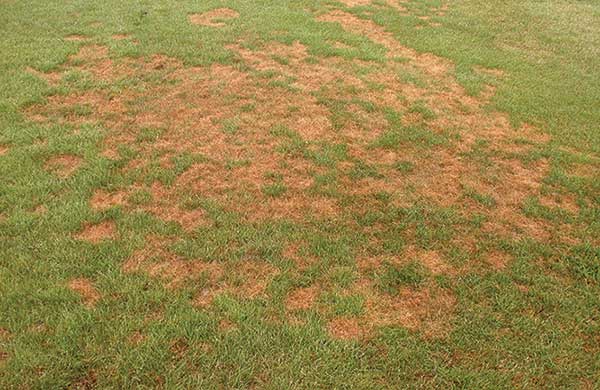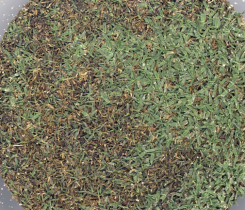Where a full house always wins

Rhodes Ranch Golf Club in Las Vegas hope to see 64,000 golfers a year, which averages to 250 players a day.
Forget the royal flushes, Rhodes Ranch Golf Club in Las Vegas goes all in on a packed tee sheet.
Roy Smith, general manager at Rhodes Ranch Golf Club in Las Vegas, remembers playing the course he now manages some six or seven years ago. At the time, he was a student at the University of Nevada Las Vegas, enrolled in the professional golf management program. After just nine holes of playing on greens that were 70 percent dirt, he swore he’d never play it again.
“Now, lo and behold, I’m running the place and seeing what it can be capable of, thanks to proper maintenance and good service,” he says. “Oscar has really turned it around.”
Oscar Sanchez has been Rhodes Ranch superintendent since October 2012. He’s been in the golf maintenance business since 1991, starting out in southern California. He has been in Las Vegas for the last 14 years, at four different golf courses.
“Las Vegas has been pretty good to me and my family because I’ve had the opportunity to do what I like to do — work as a golf course superintendent,” he says.
Oscar’s grind
Rhodes Ranch is a public daily-fee course, an “oasis in the desert,” as Smith calls it.
While it’s an oasis in the desert to visitors, it can be a grind for the employees. Like any public daily-fee course, the success or failure of Rhodes Ranch is determined by the number of players the course hosts. They hope to see 64,000 golfers a year, or about 250 players a day, based on the number of days they’re open.
That means during the busy season — March through May — the first group goes off at 5:30 a.m. and the last group is walking off No. 18 as the sun is setting. While summers also are important, the rates drop as the temperatures rise.

“(Sanchez is) out there doing everything, he does all the same work his laborers do, and he takes more pride in the place than anyone else on the property,” says Smith.
Sanchez laughs when asked about the size of his crew. Yesterday it was 17, today it’s down to 16, including himself. One of his best operators left to take a job in construction, which happens all the time, it seems. But he says they still get it done.
“We start our work an hour before the first tee time. We accomplish the most ahead of play. Second assignments get complicated, but we get it done,” Sanchez says. “We all work together. The first two or three groups might not see the whole picture because they want to play fast and get ahead of us. But the other 240 people are going to see everything nice and neat and in the best conditions possible.”
While Sanchez doesn’t have a formal turf certificate, he has taken hours of GCSAA seminars and short courses over the years. Plus, as Smith says, “He works harder than anyone I’ve ever seen.
“What he’s capable of doing with what seems like always a short staff and a tight budget never ceases to impress me,” Smith says. “He’s not the kind of superintendent who tells others what to do and then sits back. He’s out there doing everything, he does all the same work his laborers do, and he takes more pride in the place than anyone else on the property.”
Preventing Pythium
Sanchez has many enemies when it comes keeping the course looking the way he likes it. A lack of skilled labor would be one (the construction industry, as mentioned before, keeps snatching up his crew members). The constant barrage of golfers would be another. And in terms of agronomy, Pythium blight would be a third enemy.
According to Golfdom Research Editor Karl Danneberger, Ph.D., Pythium blight is most active when temperatures are between 86 degrees and 95 degrees F and nighttime temperatures remain above 70 degrees. The disease is most severe on turf sites that have high traffic and drain poorly.
In Las Vegas, with high overnight temperatures in the summer and humidity built up by regular irrigation cycles, Pythium can pop up. To combat it, Sanchez uses Segway from PBI/Gordon as a preventative. He’s been using it for two seasons with great success.
“It works better as a preventative than a curative,” Sanchez advises. “The key is, as soon as you start seeing it, spray it before it starts appearing in big patches. Pythium is one of the enemies here because it stays hot and humid overnight. We’ll start seeing it in the first week of July.”
With Sanchez and his team keeping Rhodes Ranch in pristine condition, the course is successful again, Smith says. Recalling the dead greens there several years ago — before he or Sanchez were at the course — he says the competitive Las Vegas golf market demands excellent conditions.
“We have a lot of non-resident golfers, a lot of tourists to impress,” Smith says. “We do it every year. This year, definitely, has been as busy as any we’ve seen. With the course conditions what they are… we wouldn’t have had as successful of a three-month period as we just had without (great conditions). And the past three months have been very, very good.”
Not just a grass grower, Sanchez understands how important it is to the success of Rhodes Ranch to perform well over the March-through-May peak Las Vegas golf season.
“February, March, April and May. In June it gets empty. Right now is when they can sell an expensive golf round,” Sanchez says. “So in other words, if you don’t make your money between February and June, you’re not going to make your budget for the year.”
Vegas always wins

“To me, every day is important. I’m a hands-on guy. If one guy doesn’t get the job done properly, I’m out there working with them,” Sanchez says.
Smith describes Rhodes Ranch as a player-friendly course filled with palm trees and built inside a 3,500-home community. The par 3s are tough, he says, but the rest of the course is set up with fun in mind.
Success, he says, is having a packed tee sheet with no inventory left behind.
“My success is different than Oscar’s. For me, it’s get as many people out there as possible and keep them as happy as we can,” he says. “We do that by providing great service, from the beverage cart to the service staff scrubbing their clubs down at the end of the day. If I can get 300 golfers through here with no complaints in four and a half hours, I’m stoked.”
Sanchez says that it doesn’t matter to him if it’s peak season or the slower summertime. Every day is important to him, and every day he’s happy to be there.
“To me, every day is important. I’m a hands-on guy. If one guy doesn’t get the job done properly, I’m out there working with them,” he says. “I am happy every day and I’m happy with what my crew does every day.”
Photos: Rhodes Ranch











